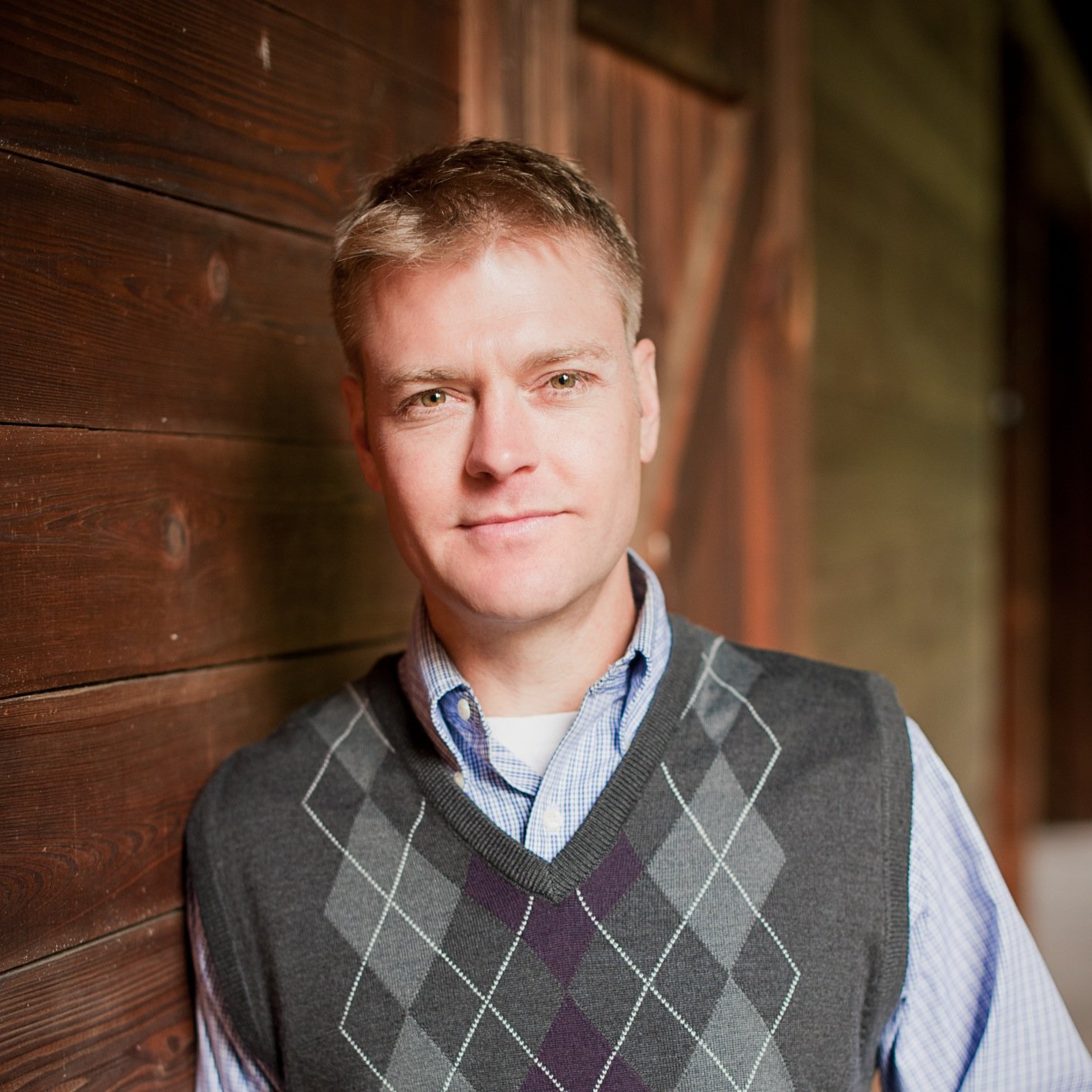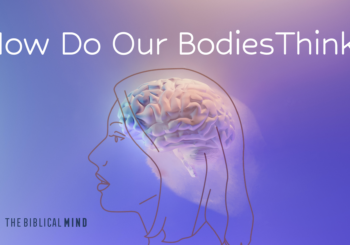Part of the Embodying Biblical Rituals in a Digital Age series
Why Gather? Virtual Technology and the Lord’s Supper
On a recent visit with friends in Scotland, I noticed how the Scots described the last two years as “the lockdown,” whereas Americans commonly refer to “Covid” or “the pandemic.” We probably intend the same meaning, yet their language far more powerfully evokes the social costs of the virus.1My deepest thanks to Jonathan Bailes, David Smith, and Amy O’Dowd for their insightful comments on this essay.
Enjoying this article? Read more from The Biblical Mind.
One such cost was not being able to gather for worship. This pressed a question already rising in the back of our minds: If technology allows us to gather, worship, and possibly even celebrate the sacraments from the comforts of our living room couches with coffees in hand, why would we ever go back? Especially when there are health risks and when gathering is so costly and inconvenient?
I take this as a welcome opportunity to revisit the theology of Christian worship. What is gathering for after all? And do we really need it?
In what follows, I visit three social crises in Western culture associated with digital technology: loneliness, absence of healing touch, and forgetting. I will show not only that we should gather whenever we can—we should—but also, more importantly, that we particularly need to return to that central act of Christian worship we call the Eucharist, Communion, and the Lord’s Supper.
Lonely and Divided
I was glad when they said to me, “To the house of the Lord we go!” (Psalm 122:1)
We all know this scene: a room full of younger people where no one is talking face-to-face and yet everyone is “in conversation.” For this group, online social life is increasingly preferred to old-school talking with its busy body language and awkward pauses.
Yet, the conveniences of this online world are leaving behind a trail of damage. One is a sharp rise in loneliness, accompanied by an increase in both attachment and attention disorders.2Craig M. Gay, Modern Technology and the Future: A Christian Appraisal (Downers Grove: IVP Academic, 2018), 48. This is partly because social media is highly addictive. It traps us in a constant pursuit of “validation” that leaves us emotionally frayed, rushing not miss out or be dropped from a stream of shares, posts, and likes.3Sherry Turkle, Reclaiming Conversation: The Power of Talk in a Digital Age (New York: Penguin, 2015), 157.
Increasing loneliness parallels a decline in empathy, particularly among children and teens. One study of college students measured a 40% drop in empathy from students just over a decade before.4Ibid., 5–12, 370 n. 21.
Neuroscientists who study this phenomenon describe a decrease in “cognitive patience,” our ability to listen to others and truly understand them.5Maryanne Wolf, Reader Come Home: The Reading Brain in a Digital World (New York: Harper, 2018), 47. Much like alcohol, the internet also has a “disinhibiting effect.”6Jonathan Sacks, Morality: Restoring the Common Good in Divided Times (New York: Basic Books, 2020), 57, 218f. Among other things this makes us more likely to say provocative, cruel, and divisive things than if we were in person. Little surprise that we see growing levels of hostility between groups with differing political, social, and moral commitments. We may be more connected than ever, but never so lonely and divided.
As I hinted at above, the biblical model for gathered worship offers a way to counter these undesired trends. As our entryway to worship we turn to a command from Deuteronomy:
He executes justice for the fatherless and the widow, and loves the sojourner, giving him food and clothing. Love the sojourner, therefore, for you were sojourners in the land of Egypt. (Deut 10:18–19 ESV)
This frequently repeated law turns Israel’s eyes to those who do not naturally belong. Just as God visited Israel when they were homeless in Egypt, so Israel was to look out for the vulnerable who lived apart from family and friends.
Significantly, the command anticipates a series of laws that require the ancient Israelites to travel to a chosen place for worship three times each year (Deuteronomy 16:1–17). Think of short national vacations for worship, feasting, and giving thanks. Not so unlike our worship with a longer commute. Only these feasts included two striking stipulations. First, everyone was called to gather for worship in a common place:
And you shall rejoice before the Lord your God, you and your son and your daughter, your male servant and your female servant, the Levite who is within your towns, the sojourner, the fatherless, and the widow who are among you, at the place that the Lord your God will choose, to make his name dwell there. (Deut 16:11 ESV)
Foreigners, the poor, the weak, the vulnerable, young and old all share in the rest and worship. Notice also the divine prerogative of “the place” God chooses. It is his worship and his desire for gathering.
Second, no one was to arrive “empty-handed” (16:16). This means that those with excess wealth had to share with those who had nothing to offer. That requires being in-person. In other words, to identify those with need you have to be near and look with interest. Old Testament worship thus nurtured an ethos of empathy, sharing, and communal rejoicing.
In sharp contrast, online social networks are designed to reward the connected and exclude the outliers who post too infrequently, are offline, or lack the punch and creativity of others.7A topic addressed with Andy Crouch’s light, expert hand in The Life We’re Looking for: Reclaiming Relationship in a Technological World (New York: Convergent, 2022). The MIT social scientist Sherry Turkle also reminds us that empathy requires face to face eye contact.8Turkle, Reclaiming Conversation, 170–1. Even if we can see someone via video, we have to choose either to look at them or at the camera, but never eye-to-eye. Nor can we sense other’s deepest needs online as in the biblical feasts. Or as Jonathan Sacks puts it so compellingly:
Morality is about engaging with the raw human vulnerabilities of others that lie beneath the carefully burnished image, and about our ability to heal some of the pain. I learn to be moral when I develop the capacity to put myself into your place, and that is a skill I only learn by engaging with you face to face or side by side.9Sacks, Morality, 57.
What has come to be thought of as uncomfortable for many is, in fact, essential to our individual well-being and, by extension, our worship.
Out of Touch
My wife and I have a several good friends who are single. Many tell us that they are starved for touch. Those of us with spouses and children are constantly bumping into one another, like it or not. But we are a shrinking group in a culture where singleness and isolation are growing.
We cannot overlook countless abuses of touch we experience in our work, families, and churches. Jesus was betrayed with a kiss. But abuses do not negate the fact that touch is good and necessary, as we see in mounting evidence. Humans were created with a highly developed C-Tactile System, which is a neural network that connects cells in our skin to different parts of our nervous system. The touch of skin to skin stimulates a release of endorphins that bring a sense of calm and encourages trust and friendship. Without touch, empathy and trust inevitably wither.
Who touched my garments? (Mark 5:31)
Mark chapter 5 tells a healing story within a healing story about the power of touch. The outer story recounts the death and resurrection of the twelve-year-old daughter of Jairus, the ruler of the synagogue (vv. 21–24; 35–43). In the inner story, a woman who had a bleeding disorder for twelve years stops Jesus on his way to Jairus’s house, heightening the suspense: two women in dire need and Jesus pausing to ask questions. The elder women is healed by touching Jesus’ outer garments (verses 22–34), and the girl is brought back to life by the grasp of Jesus’ hand (5:41).
In both scenes, Jesus’ touch unites the women with his incarnation and resurrection. The young girl represents a life restored as it reaches the precipice of fertility and motherhood. Jesus’ touch of the elder woman, meanwhile, fills her with “the power of God’s new age.”10Joel Marcus, Mark 1–8, Anchor Yale Bible (New Haven: Yale University, 2000), 368. It is a story of new bodily life in this world and the next.
Not all of Jesus’ miracles required his touch, of course, but those that do illumine the mystical connection between Jesus’ resurrection body and the divine life he shares with our bodies (Romans 6:1–5).
This brings us back to the life of the church. At his ascension Jesus passed this divine touch on for us to extend in baptism, blessing, foot-washing, anointing, prayer, and welcome (John 13:1–20; Acts 6:6; 8:17; 9:17; 19:6; 20:36f; James 5:14f). Divine touch is in our fingertips.
In her book Gilead, Marilynne Robinson writes this beautiful passage about her character John Ames as a child, reflecting on the memory of touching and blessing some barnyard cats. Ames says,
I still remember how those warm little brows felt under the palm of my hand. Everyone has petted a cat, but to touch one like that, with the pure intention of blessing it, is a very different thing. It stays the mind. For years we would wonder what, from a cosmic viewpoint, we had done to them. It still seems to me to be a real question. There is a reality in blessing. . . . It doesn’t enhance sacredness, but it acknowledges it, and there is a power in that. I have felt it pass through me, so to speak. The sensation is one of really knowing a creature, I mean really feeling its mysterious life and your own mysterious life at the same time.
This mysterious power of the touch is shared within the gathered community. It renews our sense as image-bearers, reminds us of our union with Christ, and brings healing to our pain, brokenness, and loneliness. It blesses. And it is one more reason to gather.
Forgetting
Remember the Sabbath day to keep it holy . . .
For in six days the Lord made heaven and earth, the sea, and all that is in them . . . (Exodus 20:8, 11 ESV)
The Sabbath was a day of rest. But it was also an occasion for remembrance: “For in six days the Lord . . .” Or, as the command reads in Deuteronomy, “Remember that you were a slave in the land of Egypt.” Technology can certainly aid us in storing and retrieving things. But the memory of Sabbath-keeping is not primarily informational. In the Bible, memories are embedded in stories and values passed on through shared rituals, meals, and relationships. Memories make the culture.
The writer Nicholas Carr gives us the term “embodied cognition” to describe the way our bodies-in-action come to know and remember things.11Nicholas Carr, The Glass Cage: How Our Computers are Changing Us (New York: W. W. Norton: 2010), 149. Repeating physical things like worship yields what he calls “automaticity” where our minds and bodies work together to refine talents and fix memories.12Ibid. 8185. The internet was built for the frictionless delivery of data. But automaticity requires friction: it is the fruit of our minds and bodies in community struggling through problems and questions and fixing shared neural pathways. Put differently, it is not the meaning of the symbols in the ritual that have primary importance, but what happens to us through the ritual as we perform it.13Argued at length by Dru Johnson in Knowledge by Ritual: A Biblical Prolegomenon to Sacramental Theology (Winona Lake: Eisenbrauns, 2016). Neglect the practice, lose the memory. Lose the memory, forfeit the culture.
Psalm 95 is one of the paradigmatic teachings on memory. It opens with a call to “come into his presence,” for praise and thanksgiving for God’s many good works. The climax of the psalm warns listeners to take the memory to heart:
Today, if you hear his voice,
do not harden your hearts, as at Meribah,
as on the day at Massah in the wilderness,
when your fathers put me to the test
and put me to the proof, though they had seen my work. (95:7b–9 ESV)
“Today” is now. It is that constant return to conscious awareness of the memories which shape our lives going forward. In this “today” one generation joins its voices to set itself apart from rebellious generations of the past.
The psalm also appeals to familiar language of the Sabbath, promising a future “rest” for the people of God (v. 11). Just as in the Sabbath law, the psalm rests to remember God’s identity and his mighty works:
Oh come, let us worship and bow down;
let us kneel before the Lord, our Maker!
For he is our God,
and we are the people of his pasture,
and the sheep of his hand. (95:6–7 ESV)
Pause and notice the image of kneeling together—a communal and embodied ritual that reminds us that we gather chiefly because God is worthy. As our Creator and shepherd-savior, he deserves the cries of praise from gathered voices.
What Are Humans For? A Call to Gather for Eucharist
Technology is not going away: quite the opposite. So what do we do now?
Craig Gay brings us back to the start of the essay with an impassioned call not simply to gather, but specifically to “practice resurrection” through celebration of the Eucharist.14Gay, Modern Technology, 219–21. I conclude by observing three ways the Eucharist can respond to the malaises of modern technology.
First the speed and sophistication of our electronic devices lure us with false promises of comfort and hope. As Gay observes, these aspects of technology reshape our worldview in a way that unnaturally compresses time and dilutes the sacredness of place. It leaves a “desacramentalized” world.15Ibid., 190–96; 220.
Do this in remembrance of me. (1 Cor 11:24)
The Eucharist recharges our present embodied life with the power of the sacred. Notice how the sacrament engages the basic gifts of smell, taste, and satiety. It enlists our hands in simple yet profound crafts of making bread and wine that connect us with the physical economy and sacredness of the world. Practicing Eucharist thus unites us to Jesus in his incarnation and resurrection, lifting our life in this world to the hope of perfect union with the triune God in a new creation.
Second, and related, whereas technology delivers comfort and distraction from the burdens of our bodies, the Eucharist puts us back in touch with our mortality and limits. Here is a literal but evocative translation of Psalm 90:3:
Return, O human to the dust;
And say, “Return O sons of Adam.”
We are finite creatures, not made to live here forever. Our years are “but toil and trouble” and “pass in haste” (Psalm 90:10), destined to be raised and renewed for all eternity. By God’s design our path from here to there takes us through suffering, waiting, and inconvenience in which we share in the suffering and glorified Christ (Romans 8:17).
Finally, technology suffocates hospitality. Practicing the Eucharist, meanwhile, is an exercise in welcoming.16See Rowan Williams’s account of the Eucharist in Being Christian: Baptism, Bible, Eucharist, Prayer (Grand Rapids: Eerdmans, 2014), 41–60. This is perhaps best captured in Jesus’ invitation, “Zacchaeus, hurry and come down, for I must stay at your house today” (Luke 19:5). Jesus is both the welcomed guest and the host, inviting us into the presence of the Father and the Spirit (Revelation 3:20). Holy Communion is thus a giving ritual, which is why the early church settled so quickly upon “eucharist”—thanksgiving—to describe it. “We are welcomed and we welcome; we welcome God and we welcome our unexpected neighbors.”17Ibid., 43.
With gratitude we receive Jesus, the gift of the Father through the Spirit. In generosity we extend his love and fellowship to the guest beside is. “Today” is the day to gather, eat, touch, remember, worship.
End Notes
1. My deepest thanks to Jonathan Bailes, David Smith, and Amy O’Dowd for their insightful comments on this essay.
2. Craig M. Gay, Modern Technology and the Future: A Christian Appraisal (Downers Grove: IVP Academic, 2018), 48.
3. Sherry Turkle, Reclaiming Conversation: The Power of Talk in a Digital Age (New York: Penguin, 2015), 157.
4. Ibid., 5–12, 370 n. 21.
5. Maryanne Wolf, Reader Come Home: The Reading Brain in a Digital World (New York: Harper, 2018), 47.
6. Jonathan Sacks, Morality: Restoring the Common Good in Divided Times (New York: Basic Books, 2020), 57, 218f.
7. A topic addressed with Andy Crouch’s light, expert hand in The Life We’re Looking for: Reclaiming Relationship in a Technological World (New York: Convergent, 2022).
8. Turkle, Reclaiming Conversation, 170–1.
9. Sacks, Morality, 57.
10. Joel Marcus, Mark 1–8, Anchor Yale Bible (New Haven: Yale University, 2000), 368.
11. Nicholas Carr, The Glass Cage: How Our Computers are Changing Us (New York: W. W. Norton: 2010), 149.
12. Ibid. 8185.
13. Argued at length by Dru Johnson in Knowledge by Ritual: A Biblical Prolegomenon to Sacramental Theology (Winona Lake: Eisenbrauns, 2016).
14. Gay, Modern Technology, 219–21.
15. Ibid., 190–96; 220.
16. See Rowan Williams’s account of the Eucharist in Being Christian: Baptism, Bible, Eucharist, Prayer (Grand Rapids: Eerdmans, 2014), 41–60.
17. Ibid., 43.
Image created by Rubner Durais
Subscribe now to receive periodic updates from the CHT.





